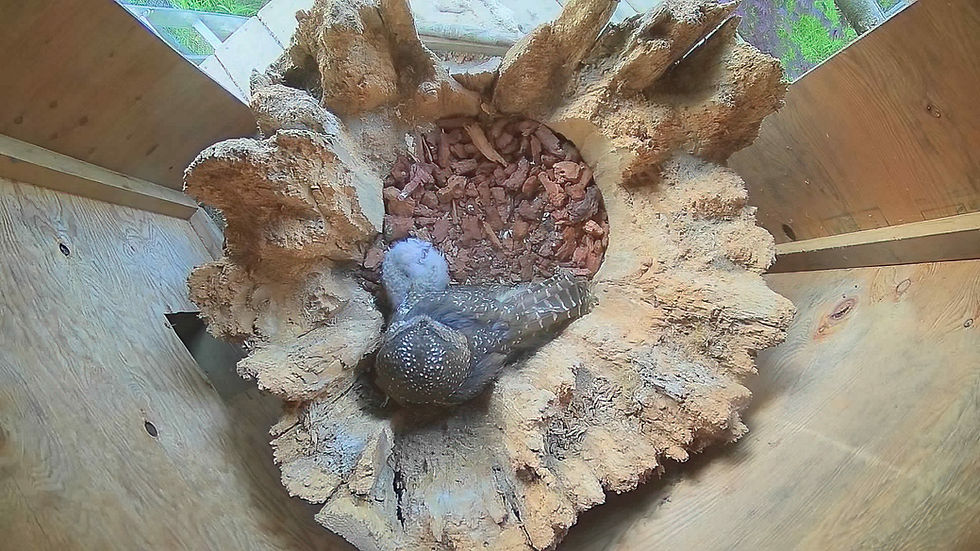How Clean is Clean?
- Sep 30, 2020
- 2 min read

Though the breeding season is always the highlight and most demanding time of the year, the NSOBP is busy already making preparations in January and February leading up to the arrival of eggs. All of these measures are necessary in order to give the precious spotted owl eggs the strongest start possible once they arrive in March.
During the 32 day artificial incubation period and ten days of hand-raising after hatch, it is important that the equipment used is clean, vigorously tested, and organized.
The first step in the weeks-long process is the scrub down of exterior surfaces, such as the walkway approaching the incubation building. The walkway is scrubbed top to bottom with a 10% chlorine bleach solution. Twice. Shoes are also removed at the door to manage any mud or dirt that may be tracked in from outside. The incubation building is split into two rooms.
The smaller of the two rooms is the incubation room. This room has four incubators, including the newest unit that was purchased at the end of last year to accommodate the increasing number of eggs laid each year.
Every tool used throughout the breeding season MUST be sanitized. The sanitation process is made up of three stages: hydrogen peroxide, 70% ethanol, and 10% chlorine bleach. Every single tool and piece of equipment in the incubation building is taken apart and cleaned. Everything from crayons for labelling eggs, small plastic dishes, to the very delicate parts of the incubators data are cleaned! The adjoining hand-raising room, which includes hatchers, brooder boxes, and feeding tools, is also cleaned top to bottom. All of this cleaning results in a multi-week team effort that must be completed before the arrival of the first eggs.
After everything is cleaned and ready to go, the next task is testing the incubators, as strict control of humidity, temperature, and gentle rotation of the egg is critical for development. Each incubator’s parameters are recorded three times per day to make sure that the machines are stabilized. Temperatures are also taken using analog thermometers in different “zones” of the incubator to determine if there are any hot or cold sections that should be avoided when eggs are put inside.
Finally, a practice round of fertile chicken eggs are incubated to give the interns a first-hand crash-course in egg development, and to familiarize them with the incubators. This also gives staff the opportunity to fix any “bugs” the incubators might have acquired during the off-season. Interns learn techniques such as handling of the eggs, candling, and the proper sterilizing techniques to avoid cross contamination. After the chicken eggs hatch, the equipment used is thoroughly sterilized once again, and staff and interns alike wait in anticipation for the arrival of spotted owl eggs!








